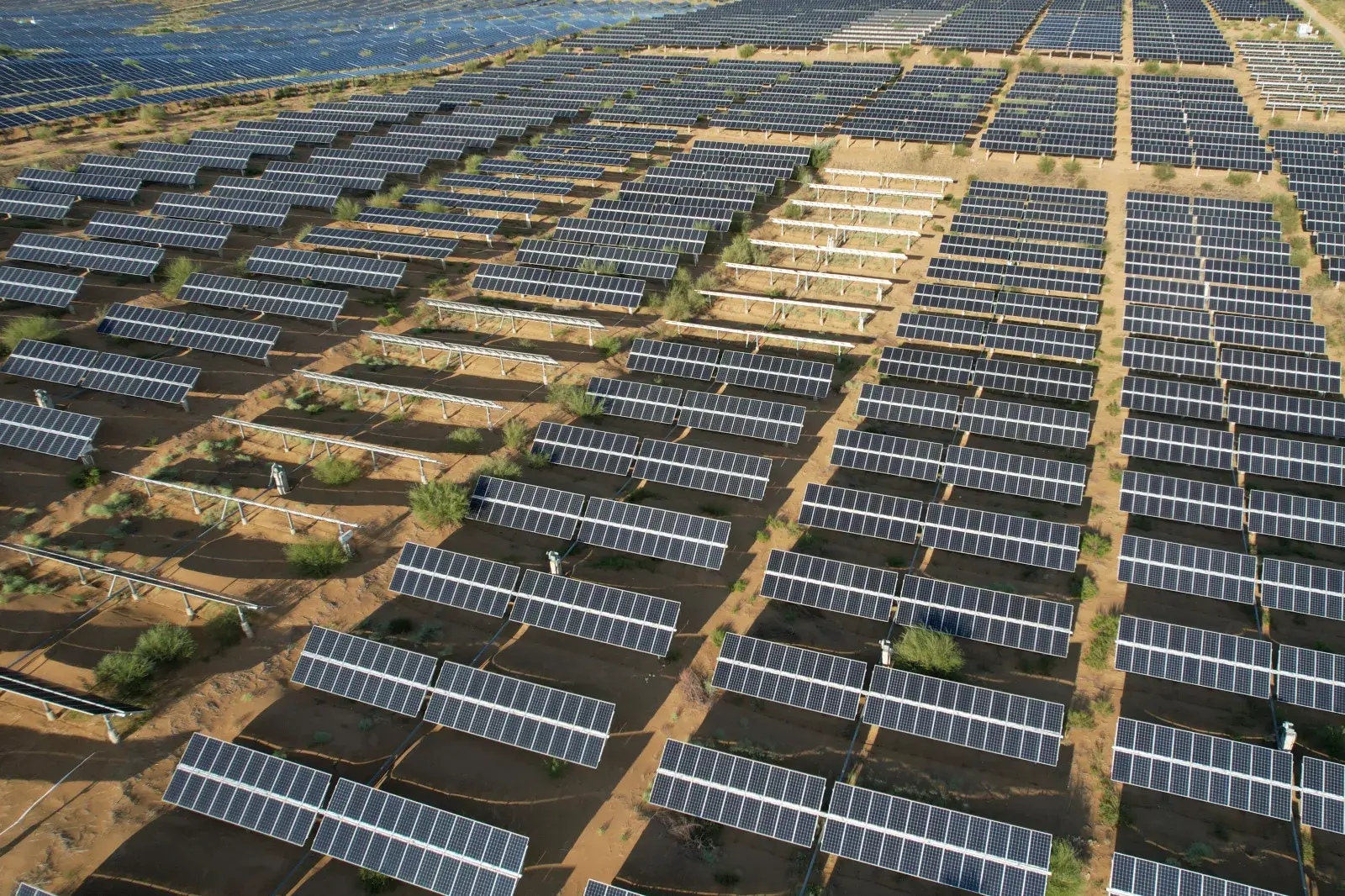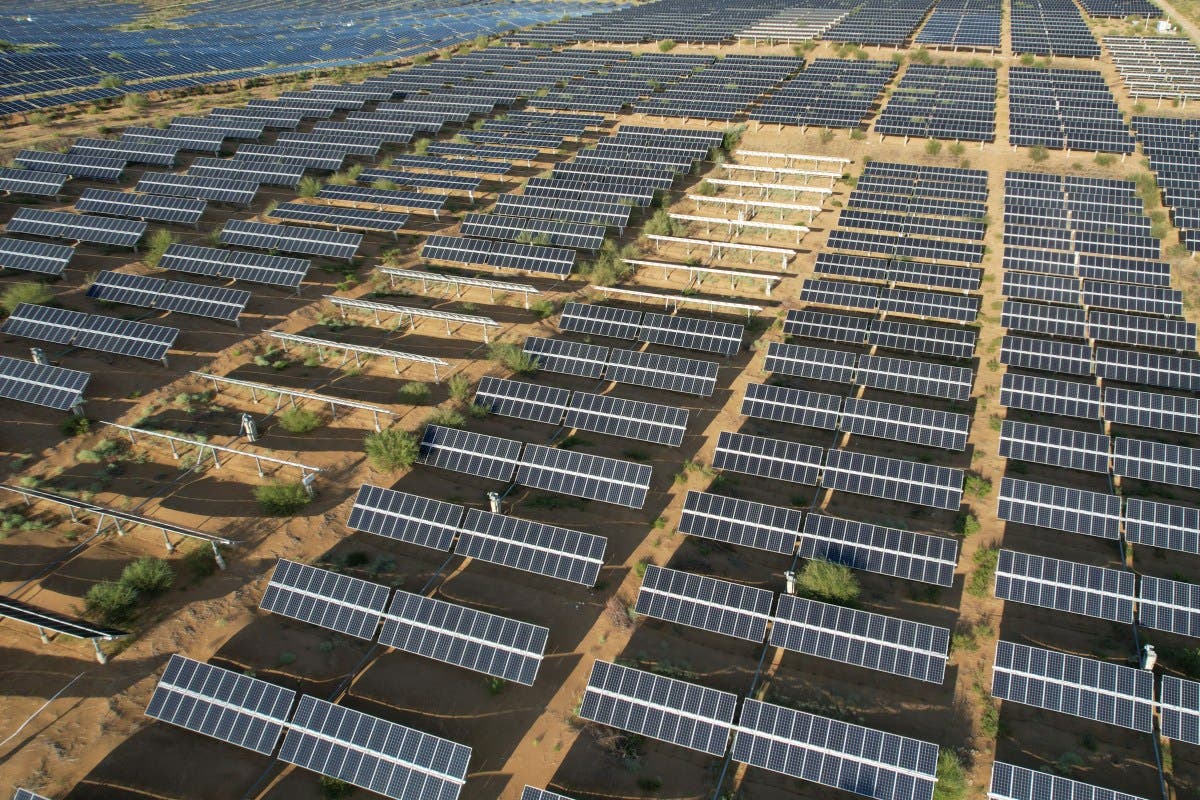China has constructed an enormous solar farm complex on the Tibetan Plateau which is currently around seven times the size of Manhattan.
According to The New York Times, the facility is intended to reach about 10 times the size of Manhattan in three years as Beijing makes a concerted push for green energy.
Newsweek contacted the Chinese Embassy in Washington, D.C. via email on Saturday for comment.
Why It Matters
Beijing’s launch of the Talatan Solar Park, a sprawling 162-square-mile complex, underscores a consequential shift in global energy investment. As China accelerates its transition to renewable power, it is simultaneously positioning itself as a leader in the clean-energy sector.
Meanwhile, in the United States, President Donald Trump’s administration has slashed support for clean energy, including the recent cancellation of what would have been the nation’s largest planned solar project in Nevada. These developments highlight the stakes in the international race to build resilient, future-proof infrastructure in the face of climate change and explosive growth in AI-driven electricity use.
 What To Know
What To Know
The Talatan Solar Park, situated nearly 10,000 feet high in Qinghai Province’s Gonghe County, houses 7 million solar panels that convert sunlight—amplified by thin, high-altitude air—into enough electricity to power up to 5 million homes. The 162-square-mile site is complemented by 4,700 megawatts from adjacent wind turbines and 7,380 megawatts from hydroelectric dams, creating a diversified energy complex with high-voltage lines transmitting power over 1,000 miles to distant urban centers.
Corporate data centers and AI infrastructure, both highly energy-intensive, directly benefit from the low-cost, renewable energy generated here.
President Xi Jinping has pledged to curtail China’s greenhouse gas emissions and to multiply the country’s renewable energy output by six times over the coming years. The Talatan facility is intended to support these ambitions—not only cutting emissions, but fueling the expansion of electric vehicles, high-speed rail, and China’s role as an exporter of renewable technology.
In contrast, the United States has seen the shelving of the Esmeralda 7 solar project in Nevada, initially set to add 6.2 gigawatts and power 2 million homes. Joe Biden’s administration had advanced federal permitting, but the project was halted after the Bureau of Land Management, under Trump, changed its status to “canceled.”
Despite continued developer interest, the future of the project is uncertain, with new permitting likely to face lengthy delays. Environmental concerns, the fate of tax credits, and policy changes have all affected its trajectory.
What People Are Saying
Speaking to Spanish publication Noticias Ambientales about the Tibetan Plateau solar farm Li Shuo, senior policy adviser at the Asia Society Policy Institute, commented: “This marks a moment of global significance, showcasing that emission reduction can occur alongside economic development.”
President Donald Trump, referencing renewable power, posted on Truth Social in August, “We will not approve wind or farmer-destroying Solar,” calling renewables “the scam of the century.”
Responding on X to the Trump administration’s cancellation of the Esmeralda 7 project Utah Governor Spencer Cox, a Republican, said: “This is how we lose the AI/energy arms race with China.
“Solar with batteries can now be close to baseload power and we should keep these projects rolling until we get the gas/nuclear/geothermal plants we need.”
What Happens Next
China’s Talatan Solar Park is slated for further expansion, with additional construction over the next three years. China also aims to achieve 1,200 gigawatts from wind and solar by 2030 as part of its carbon neutrality commitment by 2060. The integration of renewable power into industry, transportation, and digital infrastructure signals long-term strategic ambitions for dominance in global technology and green energy supply chains.
In the United States, energy policy and infrastructure development remain closely tied to shifting political priorities. The future of major solar projects like Esmeralda 7 will depend on regulatory processes, forthcoming elections, and changing attitudes toward federal support for renewables. Demand for energy—fueled by AI and electrification—continues to grow, raising stakes for lawmakers and energy companies as they debate the path forward.

